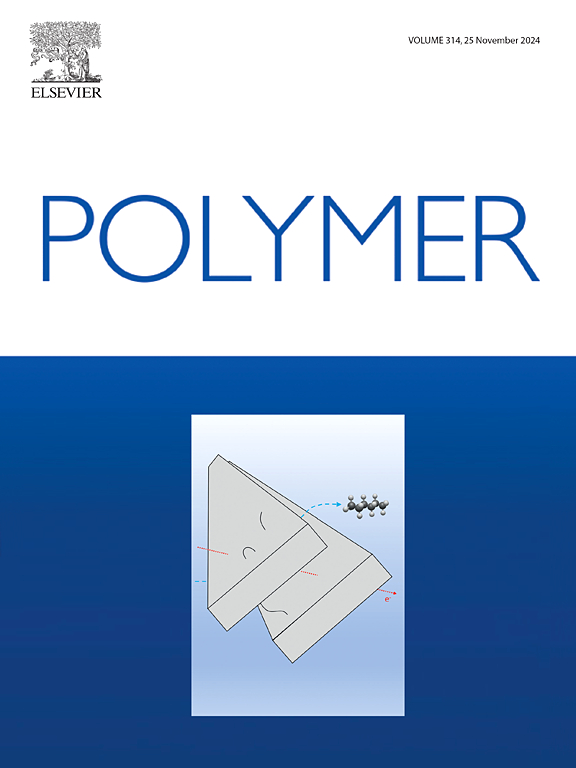Hemicellulose-lignin complex reinforcing deep eutectic solvent gels for wearable strain sensing and fire warning monitoring
IF 4.1
2区 化学
Q2 POLYMER SCIENCE
引用次数: 0
Abstract
With the rapid development of new electronic technologies, flexible electronic devices based on conductive gels have emerged and are widely used in wearable electronic devices, electronic skins, electronic fabrics and other fields. However, traditional deep eutectic solvent polymer (PDES) gels face many problems in terms of mechanical strength and conductive properties. In this study, hemicellulose-lignin complex (HLC) extracted from straw was used as a physical cross-linker (additive) to prepare polymethacryloxyethyltrimethyl ammonium chloride-Glycerol (PDMC-Gly) gel. With the addition of 2 wt% HLC, the tensile strength and elastic modulus of HLC/PDMC-Gly gel were 846.2 kPa and 290.0 kPa respectively, both of which were significantly higher than pure PDMC-Gly gel. The introduced HLC with lignin benzene ring structure units gave the gel excellent light transmittance and ultraviolet blocking properties. In addition, the incorporation of HLC reconstructed the hydrogen bonding network within the gel, resulting in the release of free Cl− ions. Consequently, the ionic conductivity of gels was significantly enhanced, reaching of 1.61 × 103 mS/cm. This gel has excellent sensing sensitivity, humidity responsiveness and thermal stability, and has potential application prospects in the fields of real-time human body detection, environmental detection and fire early warning.


求助全文
约1分钟内获得全文
求助全文
来源期刊

Polymer
化学-高分子科学
CiteScore
7.90
自引率
8.70%
发文量
959
审稿时长
32 days
期刊介绍:
Polymer is an interdisciplinary journal dedicated to publishing innovative and significant advances in Polymer Physics, Chemistry and Technology. We welcome submissions on polymer hybrids, nanocomposites, characterisation and self-assembly. Polymer also publishes work on the technological application of polymers in energy and optoelectronics.
The main scope is covered but not limited to the following core areas:
Polymer Materials
Nanocomposites and hybrid nanomaterials
Polymer blends, films, fibres, networks and porous materials
Physical Characterization
Characterisation, modelling and simulation* of molecular and materials properties in bulk, solution, and thin films
Polymer Engineering
Advanced multiscale processing methods
Polymer Synthesis, Modification and Self-assembly
Including designer polymer architectures, mechanisms and kinetics, and supramolecular polymerization
Technological Applications
Polymers for energy generation and storage
Polymer membranes for separation technology
Polymers for opto- and microelectronics.
 求助内容:
求助内容: 应助结果提醒方式:
应助结果提醒方式:


